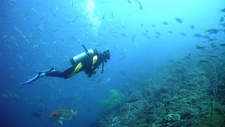Roles and Kinds of Scientists

TEKS Objective
The student is expected to identify what a scientist is and explore what different scientists do.
Essential Understanding
The student knows that information and critical thinking, scientific problem solving, and the contributions of scientists are used in making decisions.
Science Background
What Does a Scientist Do? What Does a _____ Do? (website) - There are many different types of science careers, and the professionals who do this work play a critical role in shaping how we live. Read about what scientists do, the main categories of scientific research, training required for most scientists, and the fields of science expected to grow in the future.
What Does a Scientist Do?
What Does a ____ Do? www.whatdoesado.com
Signature Lesson
Images of Science: Science NetLinks (website) - Many people have no real sense of what a scientist actually does each day. This lesson includes activities that can be done individually or in series to enable students to explore, understand and identify the diversity of work that we call “science,” and of the people who do it.
Images of Science
Science NetLinks, www.sciencenetlinks.com
- Supporting Lessons
- Extensions
- Assessment Ideas
- Literature Connections
- Related
TEKS - Additional Resources
Supporting Lessons
Fun with Adhesives: Science of Everyday Life (PDF) - Students are challenged to think like a scientist or engineer as they design, test and report the results of a new adhesive made with common materials.
Fun with Adhesives
Science of Everyday Life, www.scienceofeverydaylife.com
Elaboration Lessons and Extensions
Sun Smarts: Young Scientist Challenge (PDF) - An open ended project in which students to play the role of a scientist by researching UV radiation, determining its impact on individuals and society, and studying ways to protect ourselves from harmful UV radiation. This activity was a prompt for a past online contest, but it is engaging and appropriate for this TEK.
Sun Smarts
Young Scientist Challenge, www.youngscientistchallenge.com
Assessment Ideas
Careers in Science: Science Buddies (website) - Challenge students to chose two careers from different categories on this website and then make drawings showing how they think scientists in these fields look, including their clothing, equipment and workplaces.
Literature Connections
What is a Scientist? Lehn, B. (ISBN-13: 978-0761312987)
Scientist Ask Questions. Garrett, G. (ISBN- 978-0516246628)
Additional Resources
Cool Careers in Science: PBS (website) - Information about individual scientists who work in a variety of unusual fields, with cyber field trips to exotic places such as the Galapagos Islands.
Cool Careers in Science
PBS, www.pbs.org
Secret Lives of Scientists and Engineers: NOVA (website) - Students meet and learn about the diverse “non-science” interests of dozens of real scientists and engineers. Video interviews are personal and shed light on why these men and women chose to be scientists.
TEKS Navigation
Grade 2
Need Assistance?
If you need help or have a question please use the links below to help resolve your problem.

Comments